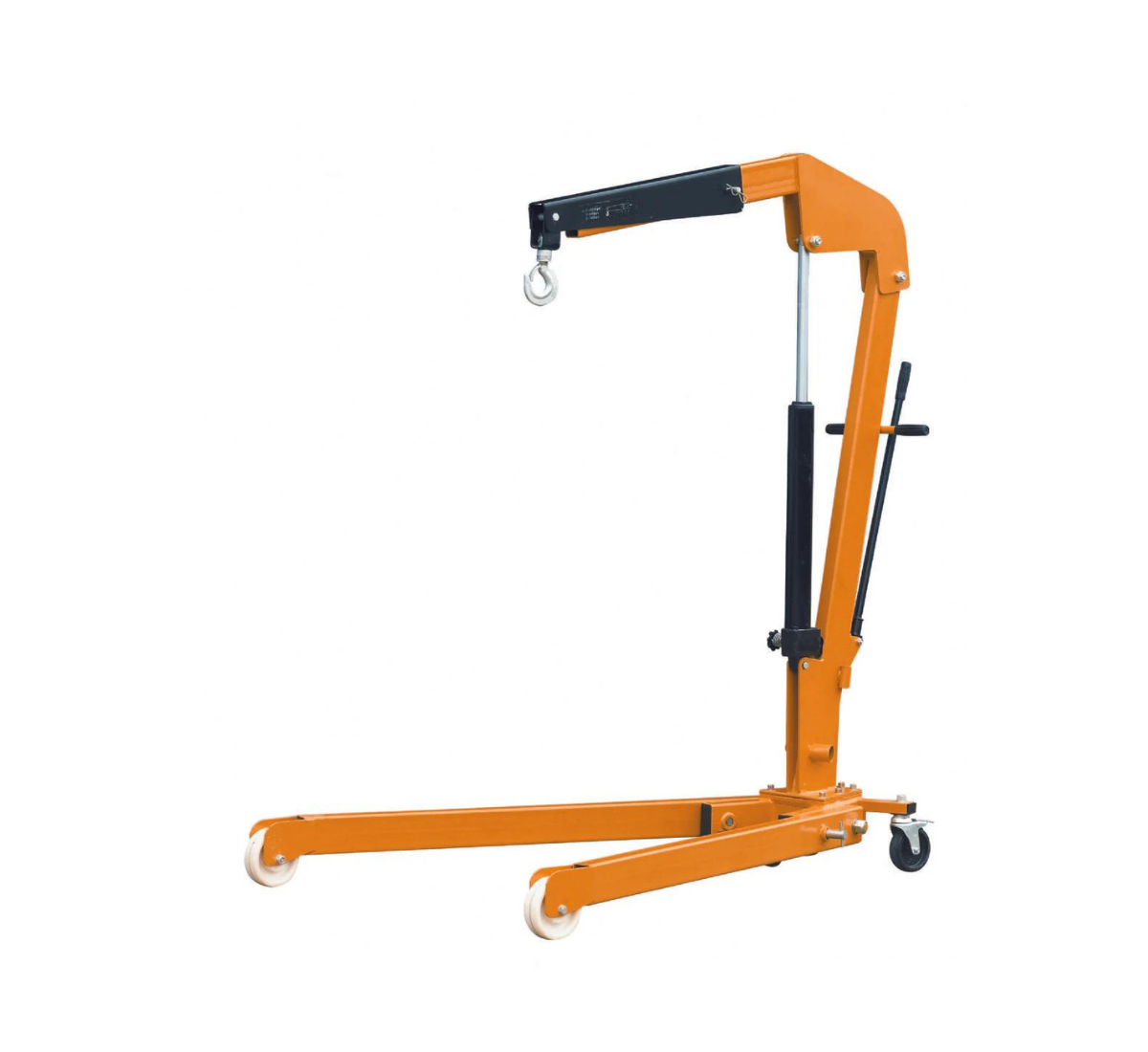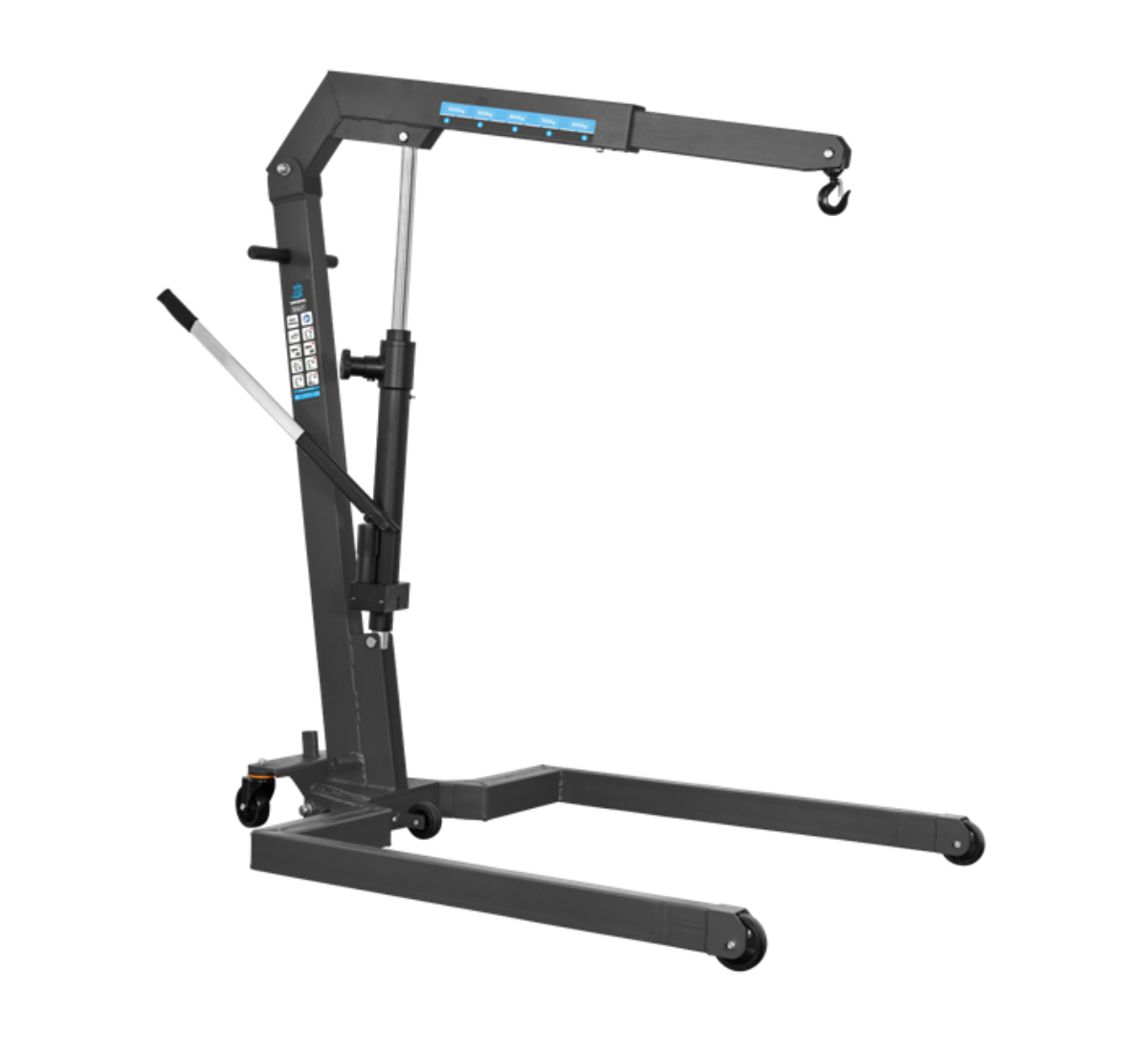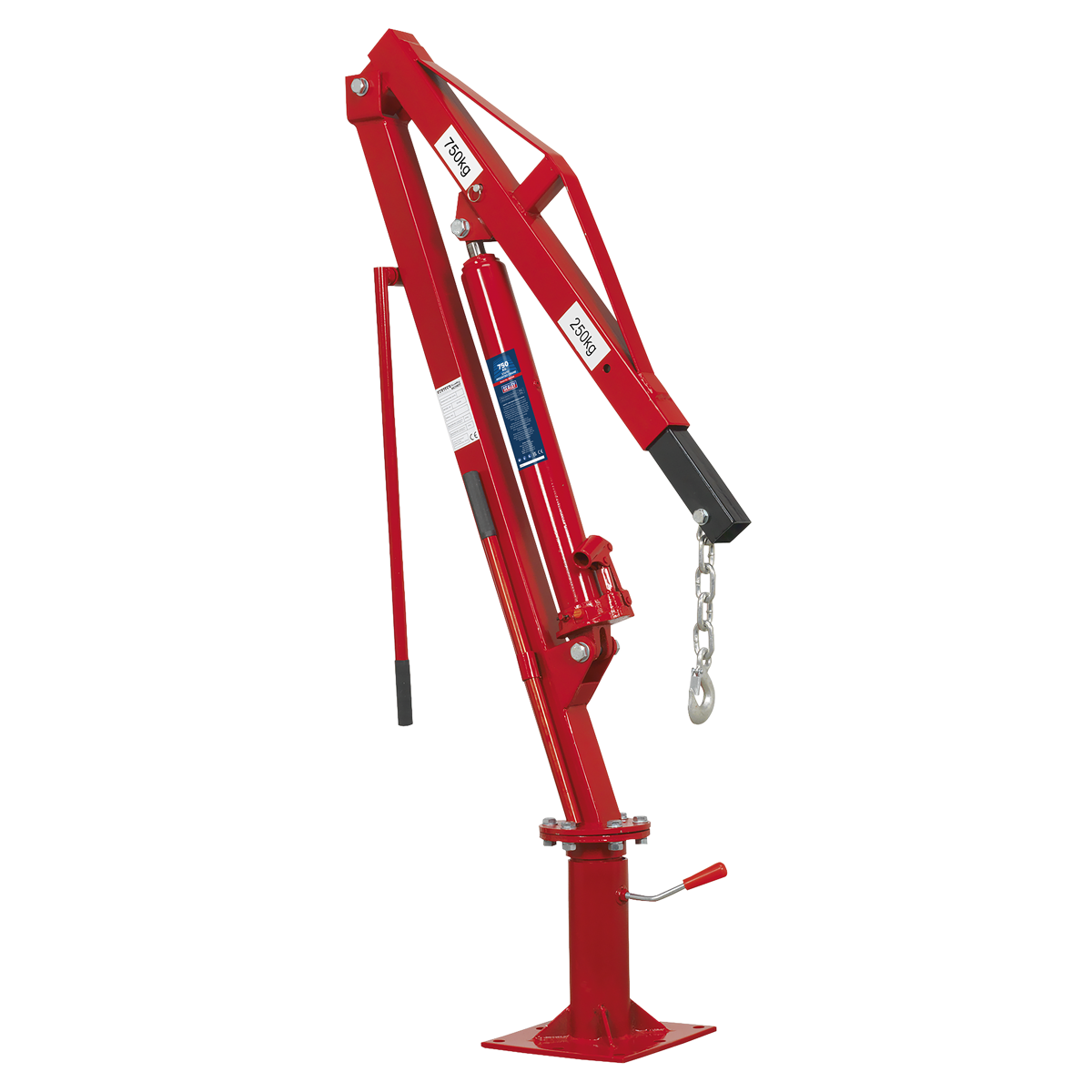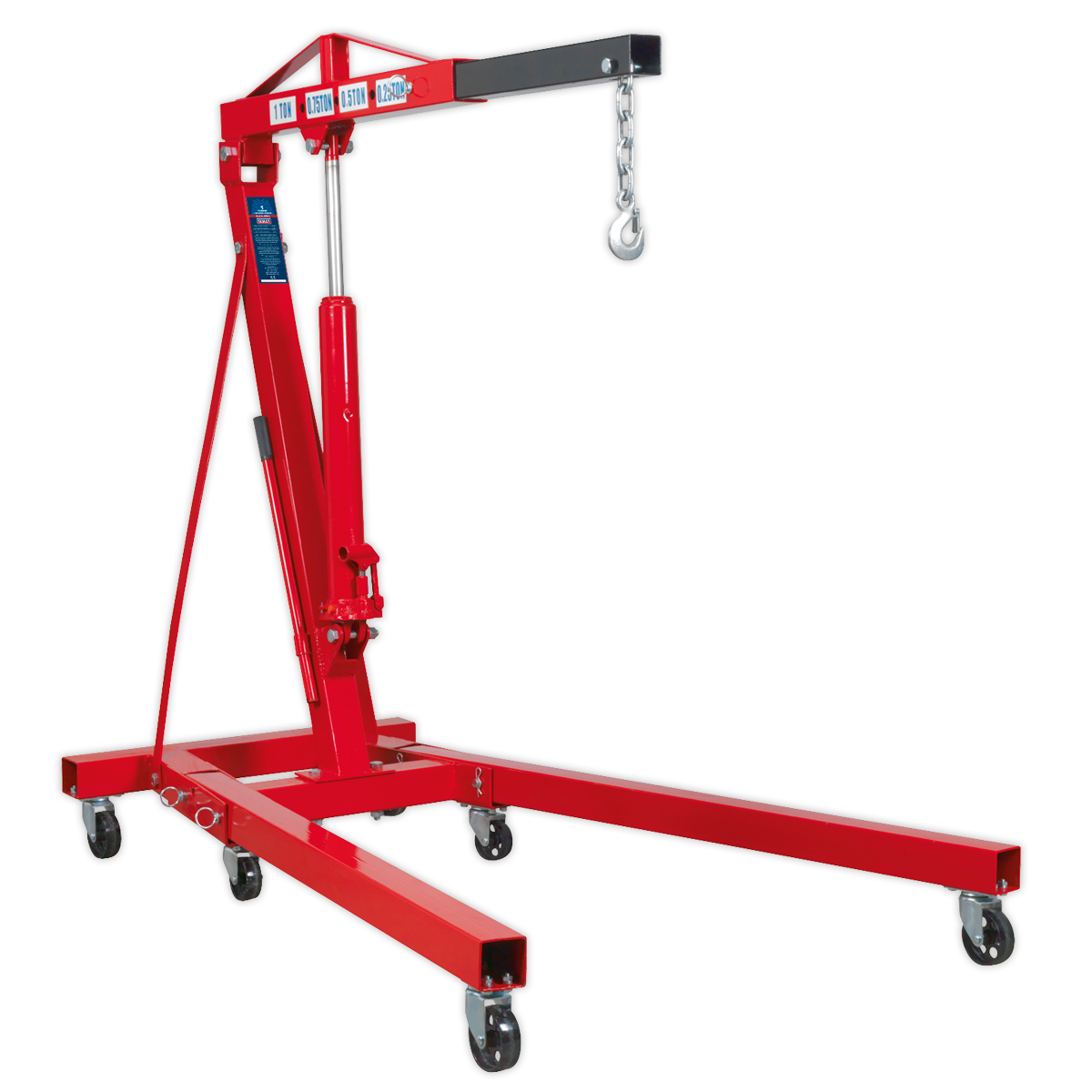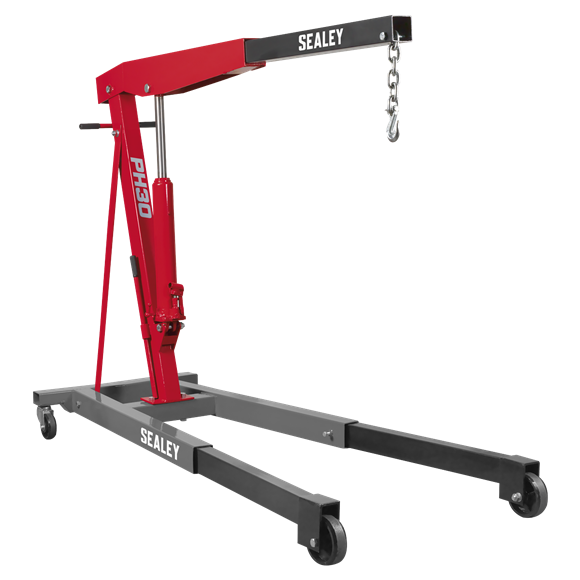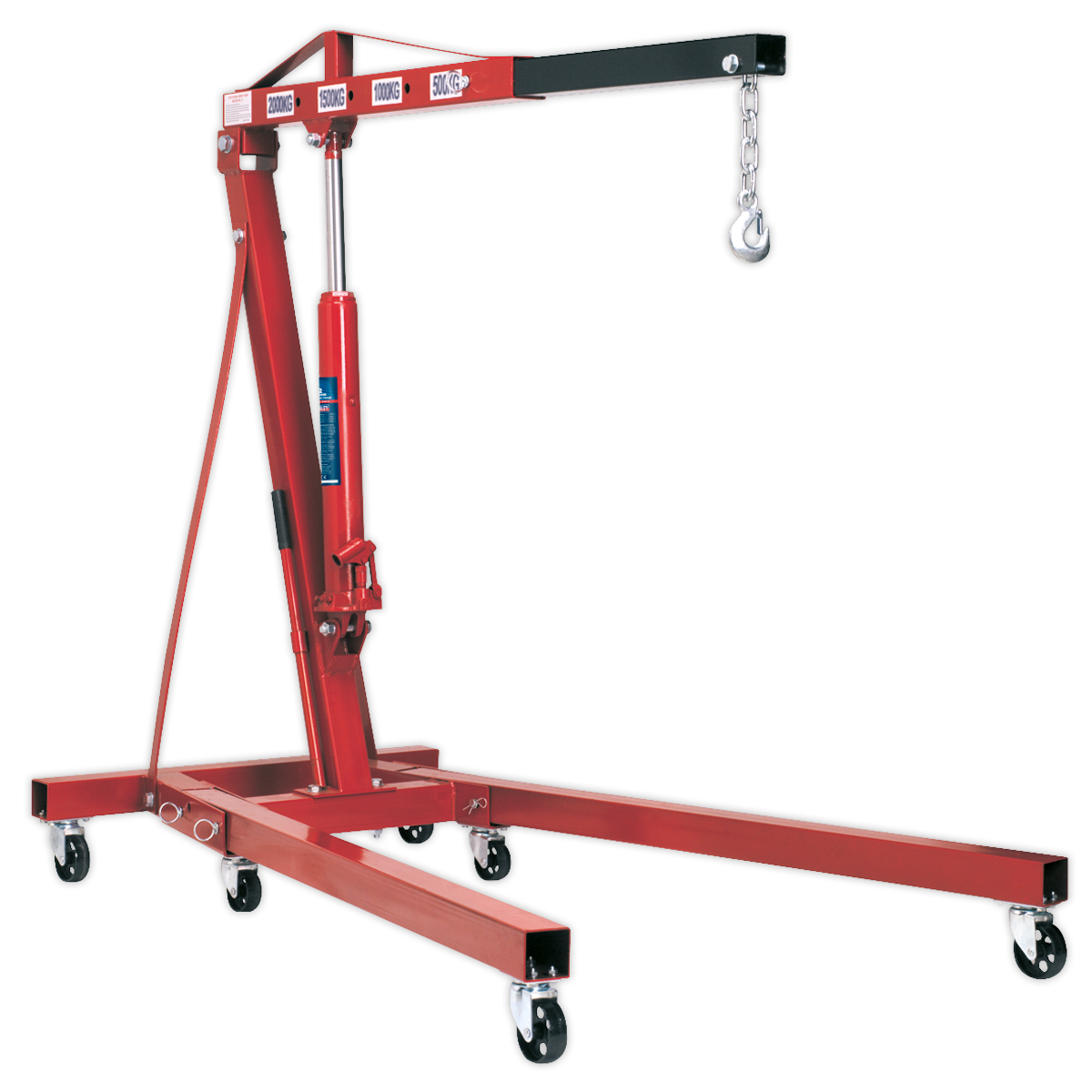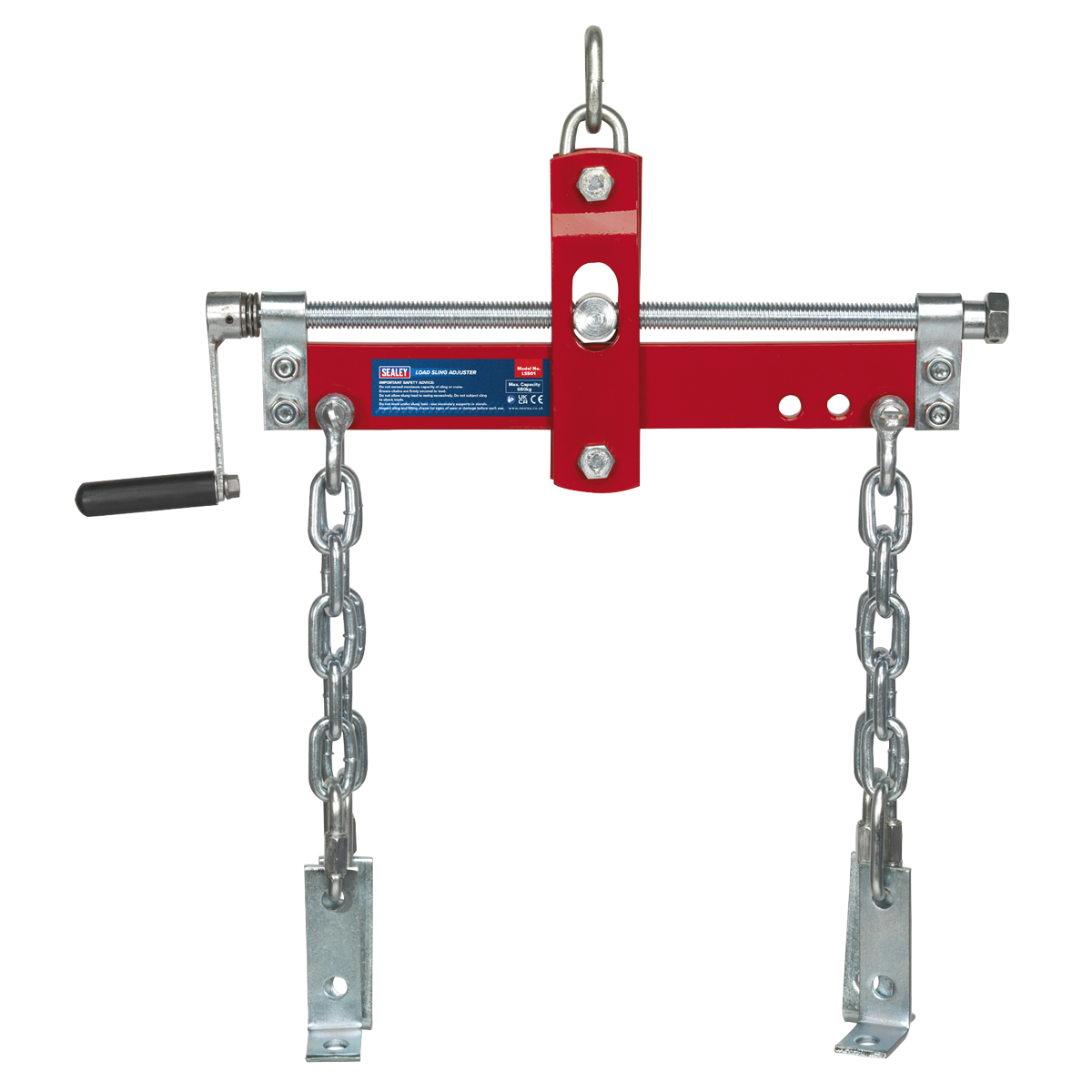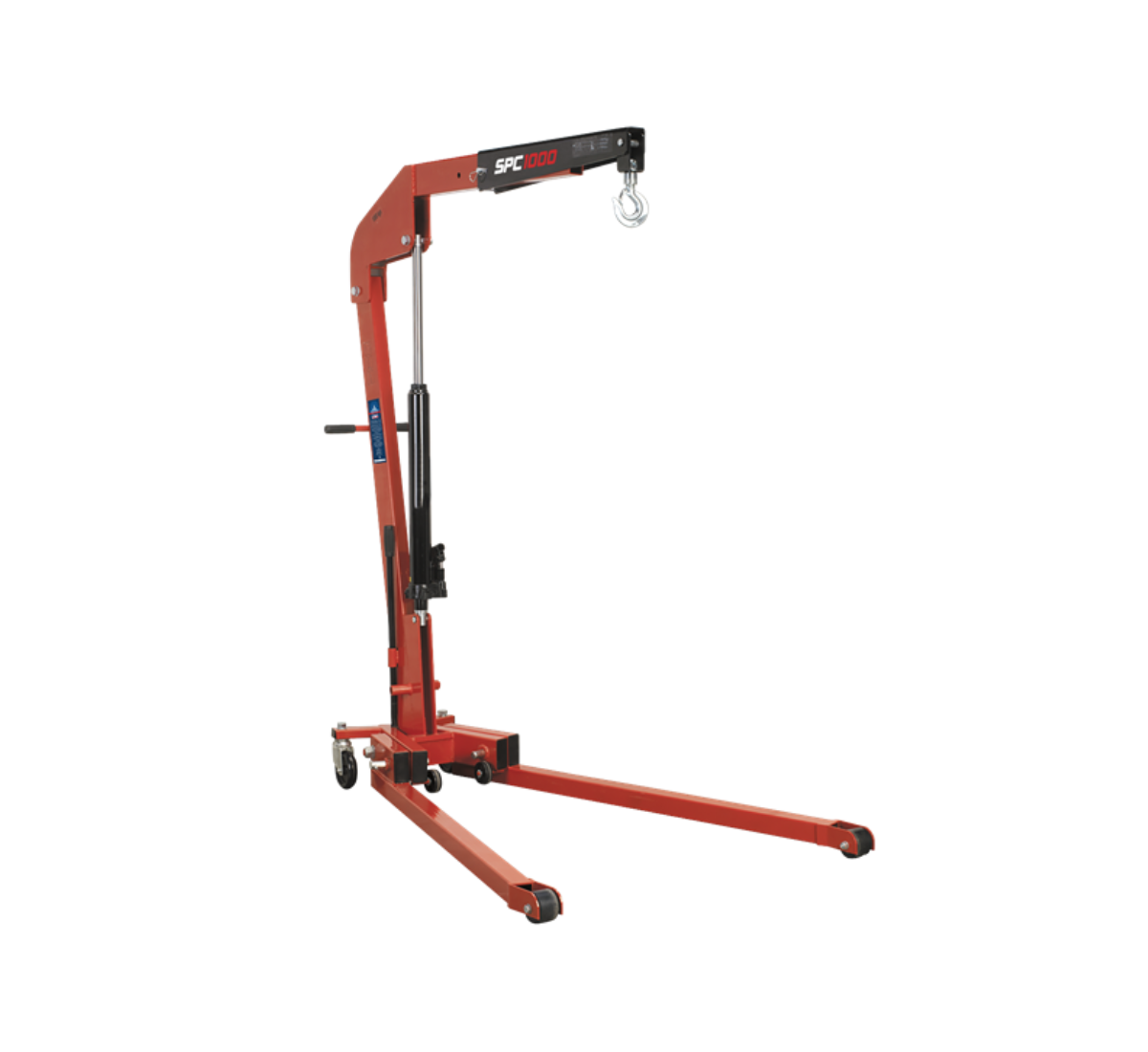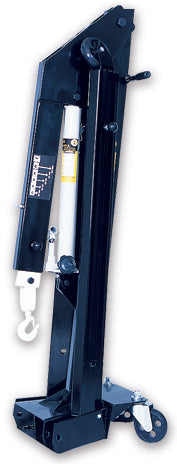Workshop Engine Cranes
Discover high-quality engine cranes at LES - Lifting Equipment Store. Designed for safely lifting and removing engines in automotive and industrial settings, our durable workshop engine cranes offer easy manoeuvrability and superior strength. LES provides competitive pricing, expert support, and next-day delivery, ensuring reliable, efficient lifting solutions for all your engine handling needs.
Whether you're pulling an engine for maintenance or installing a new powerplant, an engine crane is an essential tool for any serious automotive job. Designed for lifting and maneuvering heavy engines with precision and safety, our selection of engine cranes offers rugged construction, adjustable boom lengths, and a range of weight capacities to suit everything from compact cars to heavy-duty trucks.
WHAT IS AN ENGINE CRANE?
This piece of lifting equipment has one role to play and does this one role well - lifting and lowering heavy-duty items. You might have seen this piece of lifting equipment before, although not know the name it. You'll find them in places like a mechanics workshop, a car repair shop, or a car garage as one of the most popular things they're used for is lifting and placing engines in and out of a car. They are also referred to as an engine hoist, as similar to the way it got its more commonly known name, they raises and lower heavy-duty items such as engines in and out of allotted space.
It's important to not mix up this equipment with any other type of hoists that include variations such as car hoists where they can be used to lift the entire car up for a mechanic to get under, an electric hoist which can work automatically, or chain hoists which are similar to electric hoists but require more manual usage.
This product is usually required to perform any major vehicle repairs as it can get heavy items within the bonnet of the car out of the way accurately and quickly compared to handling it yourself, providing you can handle the weight. They come in different sizes and models with various weight-lifting capabilities and depending on the job you need it to do will likely decide what type or what weight capacity version you will need.
For example, a version like the Steerman Standard Folding Portable Engine Crane comes with a 1,000kg weight capacity which is prepared to do some heavy-duty jobs compared to a version such as the Pfaff Silberblau 500kg v-shaped hwk kls heavy duty folding engine crane which as a lower weight capacity of 500kg.
HOW DOES AN ENGINE CRANE WORK?
All variations work in the same way, regardless of what weight they carry, and do the job of lifting, holding, and lowering heavy-equipment in an effective manner. The way this piece of lifting equipment works is identical to the way a standard building crane works in the way it has a weight capacity it can lift, move, and lower making it easy to move heavy items at a quicker and easier rate through some awkward spaces to handle. The lifting equipment uses hydraulic cylinders with special oil called liquid fluid or otherwise known as a hydraulic liquid to give it easy movement similar to the way DW40 works which stops stiffness and lack of free movement.
The process of getting one to work is operated by a person who pumps a winch attached to the frame and base of the cylinder which increases oil pressure into the cylinder and creates a force that is able to lift up the engine or heavy-duty item that is attached to the chains.
When lowering the load the person operating it needs to use a bleed valve that is usually located on the hoist. This decreases the pressure into the cylinder and then creates an effect to continually lower the load.
DESIGN OF AN ENGINE CRANE
Most designs are the same or have slightly different variations due to size and weight allowance but the frame and structure of how they are made up should be relatively the same.
FRAME
The frame for this piece of equipment is made up of multiple metal plates that hold the hydraulic system in place and give a frame for the hydraulic cylinder to be attached to. The frame is the most important part as it gives structure to the way the piece of equipment works and how it's able to lift and hold the heavy-duty loads. This consists of everything that makes them up and allows them to work as they do with it consisting of the main bar, support bars, and space for the hydraulic cylinder to sit and operate. The main bar is thicker than the support bars because it has to withstand the highest force when loads are being lifted. The support bars are what hold the load and support the main bar carrying the bulk of the weight.
LEGS & WHEELS
In most cases, you will find they have four wheels with two nearly directly under the main upward support frame and a hydraulic cylinder with the other two on each end of the legs allowing them to move forwards, backward, and to the sides with lift capacities usually going up to two tonnes. Sometimes when they're being used for projects where more flexibility is required, there will be six wheels to them so they can be moved in any direction providing there is the room to do so. There are two types of legs that are regular and adjustable. Regular are fixed legs that have a standard length while adjustable legs, like the name says, can be adjusted for longer and shorter legs dependent on the item(s) that need to be moved and their weight. The longer the legs, the more stable and bigger the weight the crane can handle.
BOOM, CHAIN, HOOK
These are the overhanging parts that come off the main bar and allow it to pick up items, move the items, and lower the items with ease. It's quite common for them to have adjustable booms as this allows them to reach further locations and get to other departments within a car for example. However, when the boom becomes more extended it decreases the allowed lift capacity which needs to be considered when lifting heavy-duty items and, of course, different versions will have different weight capacities that will need to be considered.
HYDRAULIC JACK
Just like other parts of this equipment, these have their own maximum lift capacity which is usually larger than what the frame can lift overall to make sure it does not fail, almost like a fail-safe. The hydraulic jack is operated through a lever and the bigger the weight its lifting and carrying, the longer this can take as it's being required to lift and hold an increased weight. As mentioned above, when the item needs to be lowered, there's a bleed valve that needs to be turned which releases the pressure in the hydraulic pump and lowers the item at a safe rate and in line with the person operating it. Whenever lowering a piece of equipment, please make sure you do so safely as releasing can be done a lot quicker and as a result brings health and safety risks as well as potentially costly results such as damaged goods.
WHERE IS THIS EQUIPMENT USED?
The main places where you will find this piece of lifting equipment used is within workshops that usually deal with cars. This is due to their easy capability to lift an engine out of the body of a car with ease compared to other methods that might take a while longer such as using human strength. However, when someone has one of these products, it's likely to find itself being used for other jobs other than lifting an engine due to its capability to lift most similar-sized heavy goods and other parts for vehicles.
HOW TO USE AN ENGINE CRANE SAFELY
It's important to know the best practices when using this type of equipment, especially if you're new to using one, you need to make sure you properly understand how they work and what the best practices are to get the most out of them. We always recommend you make sure your equipment is in suitable condition and well looked after before using it to avoid any costly results.
It's important when using any piece of heavy-duty equipment in a workshop that you leave enough room to do the task at hand as to make sure you don't cause a health and safety hazard and so you can do the task effectively. It's the exact same principle when you're using this piece of lifting equipment. You can likely imagine the problems you might have if you don't leave enough room to move a large engine coming out of a car into a safe spot. So please make sure you give yourself enough room to do your lifting, moving, and lowering tasks with the engine crane effectively.
When you're using this product, it's likely you're going to be using it to lift, move, and lower heavy-duty items that could cause some serious damage both financially and people's wellbeing. When you're getting the piece of equipment up and folding it out or you're finishing up with and folding it back up, make sure you take your time to make sure everything is done correctly as to not cause unnecessary damage and get maximum efficiency out of it.
STORING YOUR ENGINE CRANE SAFELY
Fortunately, these products are made in a way that they can be easily folded up to keep space clear and reduce the chances of them being damaged while in use. Make sure you do this when you're not using it to extend the lifetime of it, reduce the risk of damage, and minimise any chance of health and safety concerns within the workplace.
WHEN TO REPLACE AN ENGINE CRANE
They do last a long time but like most things, they eventually run their course and you'll want to make sure you replace it to stop it from becoming a health and safety hazard to yourself, colleagues, and the workplace in general. You'll notice when you need a replacement by keeping an eye out for aspects such as the stiffness of the shaft, any damage to the wheels which hold it in place, or the frame becomes unstable. If the hydraulic cylinder becomes faulty or does not have the pressure to move the items properly, this is something you will need to fix straight away as without the hydraulic system your crane will not be lifting or moving any goods. It's also possible due to the lifting and lowering of heavy-duty goods that it can be damaged and no longer fit for use.
WOULD I BENEFIT FROM HAVING ONE?
Here at LES we want to make sure you get the right equipment to add the most value to your clients which is why we offer products, that give you great value for money.
If you're requiring one of these as part of a bigger job and need to discuss how our products could be used to add more value to your clients as a wider solution, please get in touch with an experienced member of the LES team today where we will be happy to discuss your business needs.
Engine Crane FAQs
Engine cranes should ideally be used on flat, solid surfaces like concrete. Using one on uneven or soft ground (like gravel or dirt) can be unsafe. If outdoor use is necessary, consider placing steel plates or thick plywood under the crane’s wheels to stabilize and distribute weight.
For most V8 engines, a crane with a 2-ton (4000 lbs) capacity is recommended. This allows for safe lifting with a margin for added weight from components like transmissions or accessories. Always check your engine’s specific weight and the crane’s rated capacity at different boom extensions.
Yes, many engine cranes can handle the combined weight of an engine and transmission, especially 2-ton or heavy-duty models. However, ensure your load leveler is rated for the total weight and that the crane's boom is fully retracted for maximum lifting capacity.
Most engine cranes require at least 4–6 inches of ground clearance to slide the legs underneath the vehicle. If your car is low-profile or lowered, you may need to raise it on jack stands or use low-profile legs on the crane.
Yes, many professionals and DIYers do solo engine installs with a crane. A hydraulic engine crane with a load leveler provides the control needed to position the engine accurately. It’s important to take your time, ensure stability, and consider safety precautions like wheel chocks and blocking.

